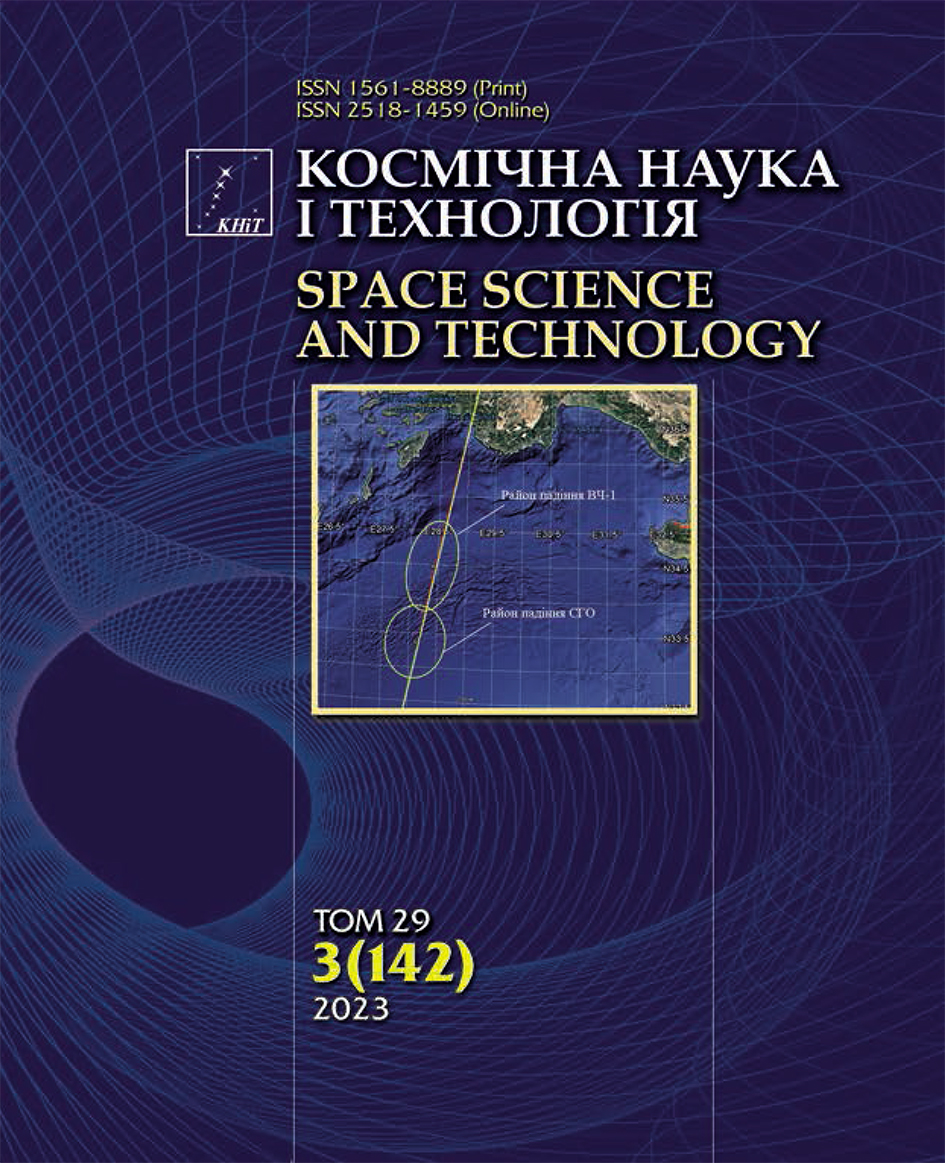On the possibility of launching spacecraft using light-class launch vehicle from the territory of Ukraine
DOI:
https://doi.org/10.15407/knit2023.03.003Keywords:
collective risk, emergency ILV impact area, flight safety, hazardous zone, individual risk, integrated launch vehicle, risk, separating parts impact areaAbstract
Currently, the discussion on the development of a national space launch system and the feasibility of spacecraft launching from its own territory is being held in Ukraine. One of the main obstacles to the deployment of the launch site in Ukraine is the dense population on its territory and the inability to ensure safety in the launch vehicle flight phase due to the hazard of separating parts impact on the neighbouring countries during the nominal mission and launch vehicle (its fragments) impact in the event of an accident. To date, the project of the promising Cyclone-1M space launch system featuring a three-stage lightweight ILV has been developed in Yuzhnoye SDO, which will allow comprehensive tackling of the flight safety issue. It features the launch site in the Kherson region with the flight trajectories routed southward to place the spacecraft into the sun-synchronous orbit. The article provides a theoretical and computational safety analysis during the nominal mission of the Cyclone-1M ILV and in the event of an accident in the flight phase, as well as recommendations for flight safety improvement. It is shown that the proposed technical and organizational solutions ensure the fulfillment of flight safety requirements for the population and facilities on the territory of Ukraine, adjacent to the launch point, on the territories of Turkey and African countries, which fall within the emergency ILV impact areas, as well as for vessels in the waters of the Black and Mediterranean Seas. Hazardous zones of the Mediterranean Sea for vessels in the areas of the fall of separating parts were calculated. To ensure the safety of vessels in the Mediterranean Sea, it is required to remove them from the hazardous zones during the ILV launch. The resulting total collective risk for the population within the emergency ILV impact area is 3.46×10-5, which ensures the fulfillment of the international flight safety requirements. Now the main problem remains the ILV flight over the territory of the Black Sea State Biosphere Reserve, where an emergency ILV may fall in the event of an accident in the initial flight phase.References
Hladkii E. H. (2020). Determining the collective risk in case of launch vehicle «Ciclon-4M» crash in the flight phase by using polygons to represent populated territories. Space Science and Technology, 26(3), 32-41 [in Russian]
https://doi.org/10.15407/knit2020.03.032
Hladkii E. H. (2015). Assessment procedure of the flight safety for launch vehicles using the geometric representation of the damage area in the form of a polygon. Space technology. Missile armaments, 3, 50-56 [in Russian].
Hladkii E. H., Perlik V.I. (2010). Mathematical models of risk assessment for ground objects during launches of launch vehicles. Space technology. Missile armaments, 2, 3-19 [in Russian].
AFSCPMAN 91-710 Range Safety User Requirements. Volume 1. 2016. Static.e-publishing.af.mil. Retrieved from:
http://static.e-publishing.af.mil/production/1/afspc/publicating/afspcma.
14 CFR. Chapter III. Commercial space transportation, Federal aviation administration, Department of transportation, Subchapter C - Licensing, part 417 - Launch Safety, 2001. Law.cornell.edu. Retrieved from:
http://law.cornell.edu/cfr/text/14/part-417.
14 CFR. Chapter III. Commercial space transportation, Federal aviation administration, Department of transportation, Subchapter C - Licensing, part 420 License to Operate a Launch Site. 2000. Law.cornell.edu. Retrieved from: http://law.cornell.edu/cfr/text/14/part-420.


